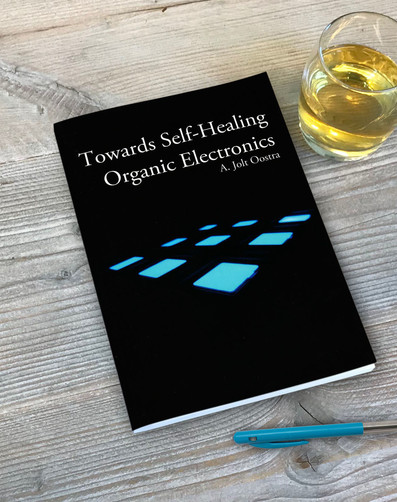
In my PhD project Self-healing organic light-emitting diodes (OLED) and solar cells (OSC) I worked on embedding self-repairing properties in OLEDs and OSCs. These devices use organic semiconductors, which have a layer thickness of ~ 100 nanometer, as active materials. Submicron particles that get trapped within the polymeric layers, and/or deposition issues of the materials can easily result in flawed (potentially short-circuited) devices. These faulty devices reduce the production yield, and increase the production cost of organic electronics.
Some of these processing challenges can be reduced by working in a clean environment, but some issues are inherently related to the used polymers. I worked on developing (additional) processing methods that do not alter the desired properties of the active materials, but do prevent potential flaws from occurring. In my research I have shown that by adding a simple, roll-to-roll compatible, processing step potential short-circuits in OLEDs and OSCs can be prevented, and that even other undesirable artifacts, such as the occurrence of bright spots in OLEDs, can be diminished. Although I was officially an employee of the University of Groningen, I worked at Holst Centre in Eindhoven. Here I have gained additional experience in the fabrication of OLEDs/OSCs and material and device analysis/characterization, while working in (professional) cleanroom conditions.
Download Thesis